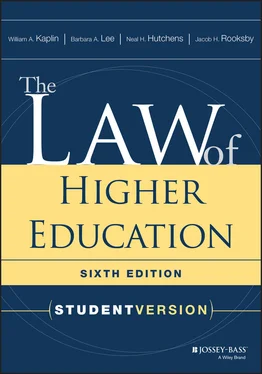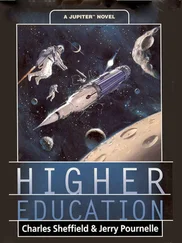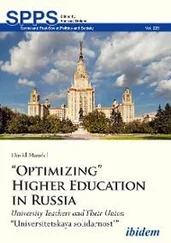The Chaudhuri court used the three-part test from Lemon v. Kurtzman , 403 U.S. 602 (1971) ( Section 1.6.3), to resolve both the prayer claim and the moment-of-silence claim. Under the first prong of the Lemon test, the court found, as in Tanford , that a prayer may “serve to dignify or to memorialize a public occasion” and therefore has a legitimate secular purpose. Moreover, “if the verbal prayers had a legitimate secular purpose…it follows almost a fortiori that the moments of silence have such a purpose.” Under the second prong, the court found that the principal or primary effect of the nonsectarian prayers was not “to indoctrinate the audience,” but rather “to solemnize the events and to encourage reflection.” As to the moment of silence, it was “even clearer” that the practice did not significantly advance or inhibit religion because individuals could use the moment of silence for any purpose—religious or not. And, under the final prong of the Lemon test, the court found that “any entanglement resulting from the inclusion of nonsectarian prayers at public university functions is, at most, de minimis ” and that the “entanglement created by a moment of silence is nil.”
As in Tanford , the Chaudhuri court also concluded that the “coercion” test established in Lee v. Weisman , 505 U.S. 577 (1992), was not controlling. At Tennessee State University (TSU) (in contrast to the secondary school in Lee ), according to the court, there was no coercion to participate in the prayers. It was not mandatory for Professor Chaudhuri or any other faculty member to attend the TSU functions at issue, and there was no penalty for nonattendance. Moreover, there was no “peer pressure” to attend the functions or to participate in the prayers (as there had been in Lee ), and there was “absolutely no risk” that any adult member present at a TSU function would be indoctrinated by the prayers.
Although both courts resolved the establishment clause issues in the same way, these issues may have been more difficult in Chaudhuri than in Tanford ; and the Chaudhuri court may have given inadequate consideration to some pertinent factors that were present in that case but apparently not in Tanford . As a dissenting opinion in Chaudhuri points out, the court may have discounted “the strength of the prayer tradition” at TSU, the strength of the “community expectations” regarding prayer, and the significant Christian elements in the prayers that had been used. Moreover, the court lumped the graduation exercises together with other university functions as if the relevant facts and considerations were the same for all functions. Instead, each type of function deserves its own distinct analysis, because the context of a graduation ceremony, for instance, may be quite different from the context of a faculty meeting or a guest lecture.
The reasoning and the result in Tanford and Chaudhuri may be further subject to question in the wake of the U.S. Supreme Court's ruling in Santa Fe Independent School District v. Doe , 530 U.S. 290 (2000). In considering the validity, under the establishment clause, of a school district policy providing for student-led invocations before high school football games, the Court placed little reliance on factors emphasized by the Tanford and Chaudhuri courts, and instead focused on factors to which these courts gave little attention—for example, the “perceived” endorsement of religion implicit in the policy itself, the “history” of prayer practices in the district and the intention to “preserve” them, and the possible “sham secular purposes” underlying the student-led invocation policy. In effect, the arguments that worked in Tanford and Chaudhuri did not work in Santa Fe , and factors touched upon only lightly in Tanford and Chaudhuri were considered in depth in Santa Fe , thus leading to the Court's invalidation of the Santa Fe School District's invocation policy. An open question involves whether invocations at a college or university graduation are more analogous, for an establishment clause analysis, to high school graduations or to prayers before the start of legislative meetings. (For a recent U.S. Supreme Court case upholding the permissibility of a prayer at a municipal meeting, see Town of Greece v. New York , 134 S. Ct. 1811 (2014).)
A 2005 case provides an instructive example of institutional activities other than group prayer that may raise establishment clause issues. The case, O'Connor v. Washburn University , 416 F.3d 1216 (10th Cir. 2005), also illustrates the type of establishment claim premised on institutional disapproval of or hostility to religion rather than institutional endorsement of or support for religion.
In O'Connor , a professor and a student claimed that the university (a public university) had installed a statue on campus that negatively and offensively portrayed Roman Catholicism, thus violating their establishment clause rights. According to the appellate court, the statue, “entitled ‘Holier Than Thou,’ depicts a Roman Catholic Bishop with a contorted facial expression and a miter that some have interpreted as a stylized representation of a phallus.” The statue had been selected, along with four others, in an annual competition, “for displaying in a temporary outdoor sculpture exhibition [that] supplements the university's collection of twenty-five [permanent] outdoor statues.” Selection of the five temporary statues was made by a three-person jury of art professionals chosen by the university's Campus Beautification Committee, and both the committee and the university president had approved the selections. Once the statue was installed along a “high traffic sidewalk,” the university began receiving numerous complaints from within and outside the university. The university considered the complaints but declined to remove the statue.
In ruling on the establishment clause claim, the appellate court applied the Lemon test, as modified by the “endorsement or disapproval” test (see 416 F.3d at 1223–24), placing more emphasis on the latter test (often called just the “endorsement test”) than did the courts in the cases discussed above. The endorsement test focuses on whether the governmental activity at issue “has either (1) the purpose or (2) the effect of conveying a message that religion or a particular religious belief is favored or preferred,” on the one hand, or disapproved or disparaged on the other. Under the first prong of the test, “purpose,” the question is “whether ‘the government's actual purpose is to endorse or disapprove of religion.’” Under the second prong, “effect,” the question is “whether a reasonable observer aware of the history and context of the [activity at issue] would find the [activity] had the effect of favoring or disfavoring a certain religion [or religious belief].” (See 415 F.3d at 1227–31, quoting Bauchman ex rel. Bauchman v. W. High School , 132 F.3d at 551–52.) Applying this test, the court focused on whether, in the context of all the pertinent facts, the university's selection or placement of the statue, or its refusal to remove it after receiving complaints had “either (1) the purpose or (2) the effect of conveying a message” that the university disapproved of or disparaged Roman Catholicism or a particular Catholic belief. Regarding “purpose,” the court determined that the plaintiffs had not produced any evidence that the university's actions were motivated by a disapproval of Catholicism and that the university had other aesthetic and educational “reasons” for its decisions. Regarding “effect,” the court determined that, even if the effect of the statue was to convey “an anti-Catholic message” (a point on which the court did not rule), a “reasonable observer viewing [the statue] in context would understand that the university had not approved or agreed with that message.”
Читать дальше












